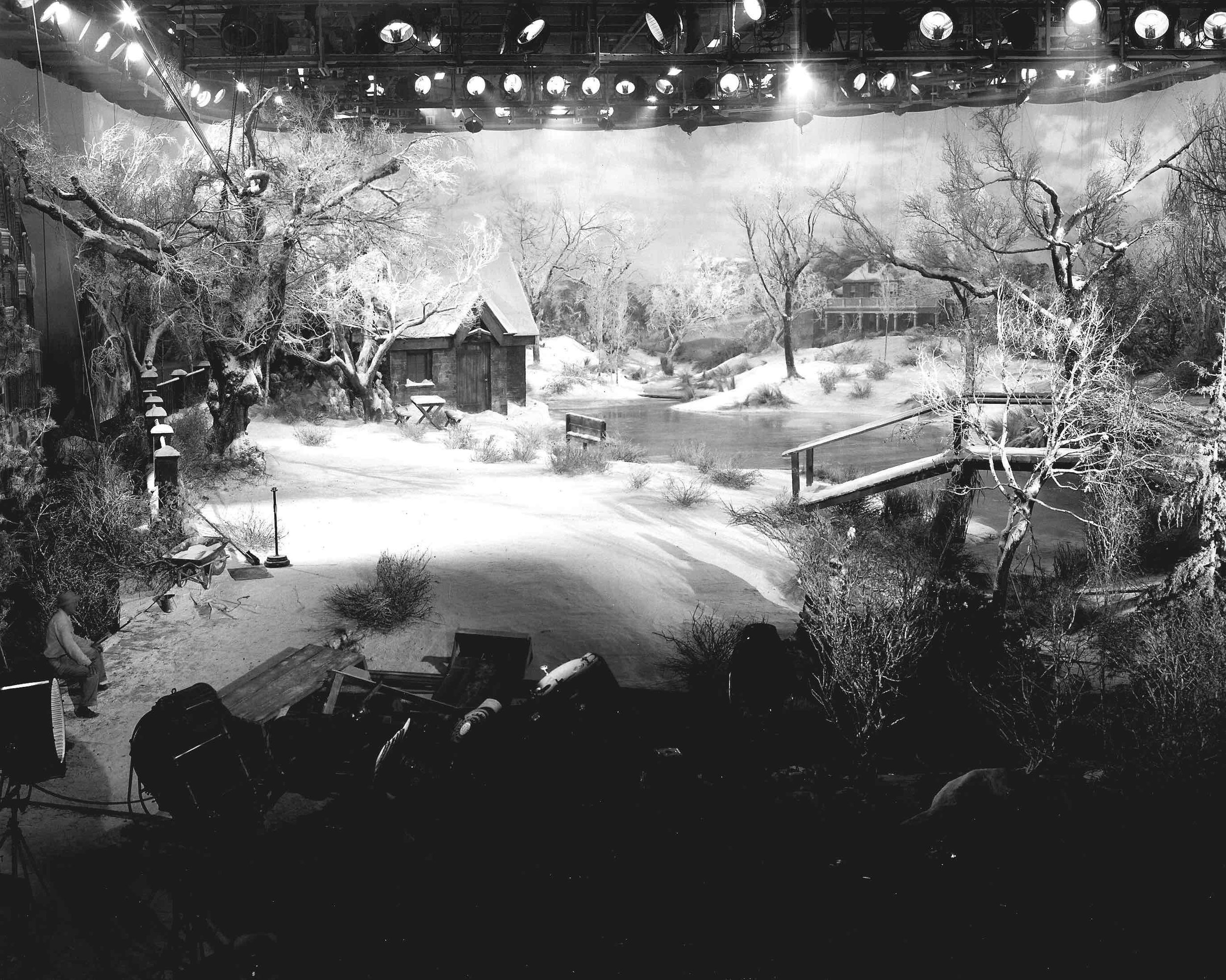How "It's A Wonderful Life" Became A Christmas Classic by Ilana Jael
For me, as for most others of my generation, it must’ve seemed as if It’s A Wonderful Life was simply meant-to-be as the ultimate Christmas classic. And though that’s arguably what the film eventually became, it was by no means a simple road to get there. However, it is a heck of a fascinating one, starting with the fact that the idea for the work that inspired it came to its writer in a dream.
That work would be The Greatest Gift, a short story written by author and historian Phillip Van Doren Stern in 1943. Though a much more in-depth examination of what led George to his dark night of the soul was added in the transition to film, The Greatest Gift does indeed contain much of the bones of its successor’s critical last 20 minutes, communicating what seems to be its core idea in this line of dialogue from the then-unnamed angel:
“You had the greatest gift of all conferred upon you—the gift of life, of being a part of this world and taking a part in it. Yet you denied that gift.”
However, after the manuscript was rejected by a plethora of publishers, Stern resorted to distributing it to his friends and family himself, attached to that year’s holiday card. Incredibly, one of these copies then made its way into the hands of a film producer David Hempstead, who found the story compelling enough to option. From there, the potential film was then seized upon by director Frank Capra, who then became its defining creative force— though, in looking back, he also seems to have been a somewhat morally complex figure, for reasons that will become clearer a few paragraphs down.
After immigrating to America from Sicily with his family as a small child, Capra slowly climbed out of poverty to become a Hollywood success. His movies were sometimes derogatively described as “capra-corn” for their arguably saccharine sense of sentimentality, yet also often incorporated controversial social and political commentary and somewhat dark subject matter, to the extent that It’s A Wonderful Life isn’t the only film in Capra’s canon in which a suicide attempt is a key element.
It’s a Wonderful Life director Frank Capra
However, after enlisting in the military during World War II and spending his time in service producing the morale boosting film series Why We Fight, Capra’s work took on an even darker character in It’s A Wonderful Life as he struggled to process his up-close exposure to the horror of the war, the shadow of which clearly hangs over the film.
It also loomed large over the psyche of leading actor Jimmy Stewart, who, as I touched on in my last post, enlisted himself, became a decorated fighter pilot, and afterwards experienced rather severe PTSD symptoms that reportedly informed his portrayal of George Bailey’s extreme emotional turmoil. As recounted here, the tears he shed during the character’s breakdown were not originally called for in the script, but were instead a genuine reaction to his in-the-moment rush of emotion.
"As I said those words, I felt the loneliness, the hopelessness of people who had nowhere to turn, and my eyes filled with tears. I broke down sobbing," he described.
Capra, who is also one of the writers credited for the movie’s screenplay, has also described the ideas he tried to convey in the film as such:
“It’s a Wonderful Life sums up my philosophy of filmmaking. First, to exalt the worth of the individual. Second, to champion man—plead his cases, protest any degradation of his dignity, spirit, or divinity. And third, to dramatize the viability of the individual . . .There is a radiance and glory in the darkness, could we but see, and to see we have only to look. I beseech you to look.”
After an expensive, expansive production process featuring one of the largest sets in movie history, the film premiered on December 20, 1946 to decidedly mixed reviews, facing disapproval that seemed to come from opposite poles.
While some critics dismissed the film as overly sentimental, others were more bothered by the bleak story that preceded its inspirational denouement. This aspect also seemed to be a turn off to audiences, who, after the collective trauma of World War II, didn’t seem to be up to the task of dealing with material so challenging.
In the end, profits from the film came up $525,000 dollars short of its $3.7 million budget, landing Capra himself $25,000 in debt and leading to the shuttering of Liberty Films, the independent film company he’d created to fund the picture. However, Capra himself never lost faith in the film’s artistic merit, later stating in his autobiography:
“I thought it was the greatest film I ever made. Better yet, I thought it was the greatest film anybody had ever made.”
And he would eventually be vindicated, at least to an extent, when the twist of fate that would eventually lead to It’s A Wonderful Life’s popularity came almost thirty years later. In 1974, Republic Pictures, the distribution company to which the film’s copyright had passed, neglected to renew that right, which made the film virtually free for television networks to broadcast. Those networks then took full advantage, airing it with abandon throughout the holiday season.
From there, it slowly caught on in the American imagination as viewers began to appreciate its virtues, spawning seemingly countless adaptations and parodies (including this particularly amusing one) as it became an essential part of the pop culture canon. Aside from our radio play version, It’s A Wonderful Life has also inspired a gender-flipped 1977 remake called It Happened One Christmas, a spin-off starring Robert Carradine as Clarence, a 1986 musical version, and even a 2016 opera.
A behind the scenes look at the studio where It’s a Wonderful Life was filmed.
Eventually, it was also recognized formally as “culturally, historically, or aesthetically significant” by the Library of Congress, as well as by the American Film Institute as not only the #1 most inspirational film of all time but one of the best 20 ever made.
The broadcast rights to the movie were eventually recaptured by Republic in 1993, after which they were sold to NBC. The network still airs the now 76 year old movie every Christmas Eve, and watching the film remains a cherished holiday tradition for many. This held true even in the otherwise atypical year of 2020, in which it became the most highly rated program of the evening after 4.75 million viewers tuned in to the annual broadcast, maybe needing its hopeful message more than ever.
Yet as ironic as it seems given the film’s immutable association with the holiday season, Capra describes himself as never having considered It’s A Wonderful Life a Christmas story at all—he’d simply liked the idea of it! Accordingly, the film was originally slated to be released in January, before another twist of fate pushed it up into the holiday slot. Capra was, however, a lifelong Catholic, and cited a desire to “combat a modern trend toward atheism” as another of his motivations to make the film.
And these intentions do seem to be evident to some, as It’s A Wonderful Life has been held up by much religious media as a shining example of Christian values and derided by others as a puerile “Christian morality tale.” But others, pointing out the lack of overt religious rhetoric in the film and that its happy ending comes at least as much from human kindness as divine intervention, have claimed the opposite, with writer David Wilson describing it as “the least religious but most humanist film that you could ever see.”
Similarly, though Capra himself was actually an anti-Roosevelt Republican who admired dictatorial figures like Franco and Mussolini, it is perhaps the influence of the other, more liberal, screenwriters on the film that has led many to consider it as exemplifying left wing values, the most extreme manifestation of which was an FBI investigation into the film as potential Communist propaganda in 1947.
Artificial snow blasts onto the streets of the fictional town of Bedford in It’s a Wonderful Life
Though the movie was exonerated after one of its defenders pointed out that the film’s theoretically problematic portrayal of a villainous banker was counterbalanced by the portrayal of George Bailey and his father as heroic bankers, one of the writers brought in to add “polish” to the screenplay was in fact later blacklisted in Hollywood for his membership in the communist party—after having been ratted out by Frank Capra himself!
Strange as all that may be, I still feel as if I’m only scratching the surface as to the history and impact of this peculiar movie, which also inspired a yearly festival that takes place at the It’s A Wonderful Life Museum in Seneca Falls, the town that allegedly inspired Bedford. However, one of the many things I find fascinating about It’s A Wonderful Life’s checkered path to notoriety is the way it seems to echo some of the story’s deepest themes.
Though its trajectory was one that its creators likely never would have chosen, much as George Bailey never would have chosen his humdrum small-town life, both film and protagonist ended up making a difference in the lives of countless people because of the way things actually turned out. Thus, while not every curveball life throws our way is going to be a welcome one, we can also never be sure which of our obstacles are necessary ones, or where life’s infinite potentialities will take each of us next.
Because, who, indeed, could have predicted that a short story rescued from the reject heap would find its way to the height of Hollywood; and then, rejected once more by most of the movie-going public, would be rescued yet again by a seemingly divine oversight? And yet the fact that it was seems somehow significant; not only as evidence of the story’s timeless wisdom, but as evidence of some method to the seeming madness of the cosmos.
So, the next time you find yourself shaking fists at fate, you can always think back to the unlikely redemption of this little-movie-that-could to remind yourself that, well, just maybe, there’s just out of reach some reason for your sorrows, that will only be revealed decades hence.
In any case, this particular radio play adaptation of the script seems to have had a far simpler history. It was first produced in 1996 at Stamford Center for the Arts in Connecticut, and has been widely remounted since to mostly positive response. Hopefully, you’ll be able to come see why that is yourself at our upcoming production, and I should be checking back in soon with an introduction to our lovely cast!
It’s A Wonderful Life: A Live Radio Play
by Joe Landry
Directed by Timothy Mark Davis
This beloved American holiday classic comes to captivating life as a live 1940s radio broadcast. With the help of an ensemble that brings a few dozen characters to the stage and create live sound effects throughout, the story of idealistic George Bailey unfolds as he considers ending his life one fateful Christmas Eve.
WHEN
December 1-18, 2022
WHERE
Island City Stage
TICKET PRICE
$20-35





